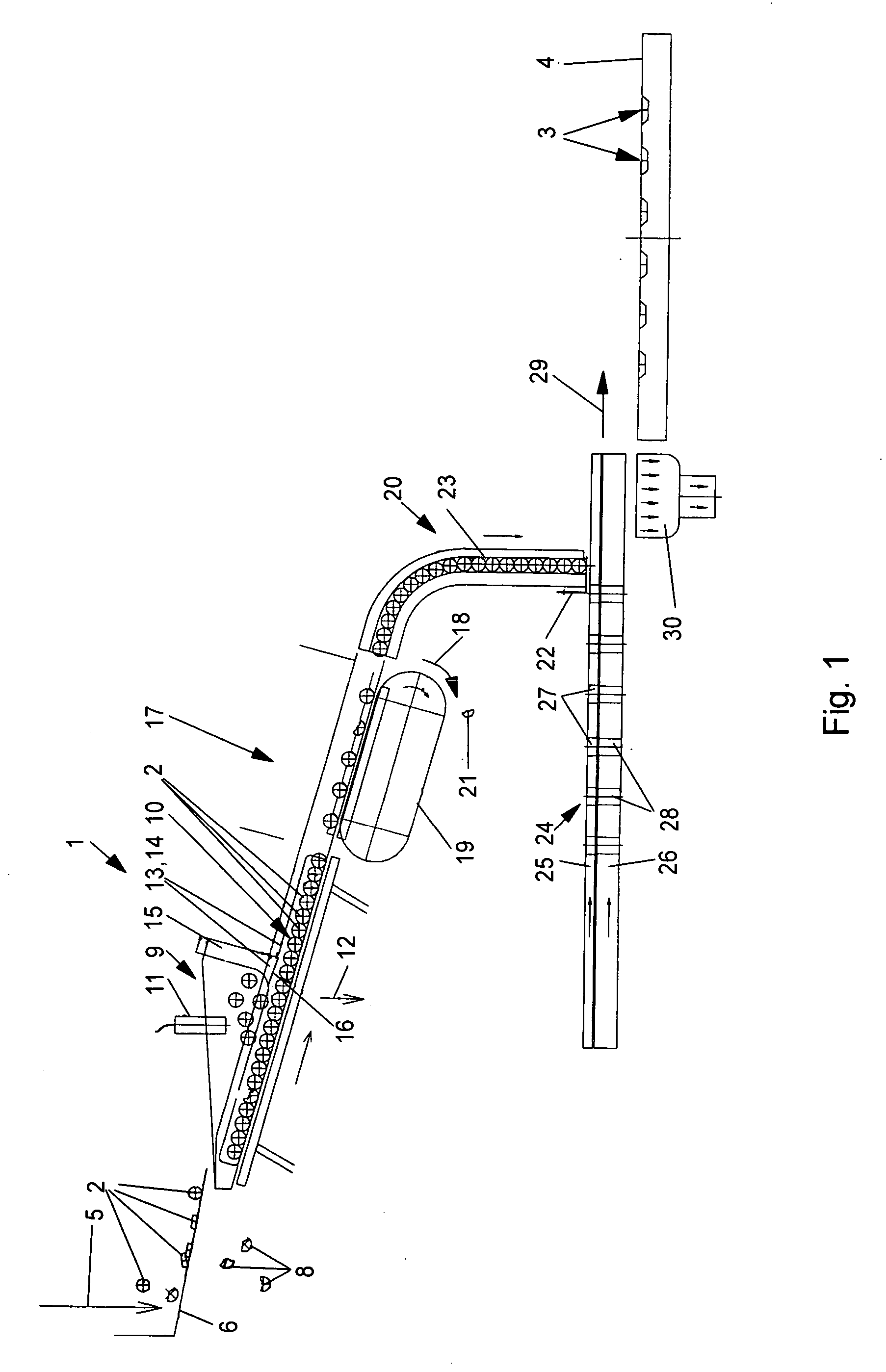Method and apparatus for placing tablets into pockets of thermoformed bottom foil
a tablet pocket and bottom foil technology, applied in the direction of liquid handling, packaged goods type, instruments, etc., can solve the problems of comparatively large dust, substantial tablet breaking danger, and small tablet height drop, so as to prevent tablet wedging up, reduce the risk of breaking, and reduce the risk of falling
- Summary
- Abstract
- Description
- Claims
- Application Information
AI Technical Summary
Benefits of technology
Problems solved by technology
Method used
Image
Examples
Embodiment Construction
[0037] Referring now in greater detail to the drawings, FIG. 1 schematically illustrates an exemplary embodiment of the novel apparatus 1. With the apparatus 1, fragile tablets 2 are placed into pockets 3 of a thermoformed bottom foil 4. The tablets 2 are delivered by a tablet press or from a reservoir (not illustrated), and they move according to arrow 5 to reach a declined slide 6 in an unsorted way. The slide 6 may also be designed as an oscillating conveyor and the like, and it may be designed to deliver tablets 2 in a time-wise controlled way. A part of the bottom portion of the slide 6 or the entire slide 6 may be designed as a perforated plate including openings 7 (see FIG. 4). The diameter of the openings 7 is smaller than the diameter of the tablets 2 such that only pieces 8 of tablets 2 fall through the openings 7 the size of which is smaller than the diameter of an entire tablet 2. It is to be understood that not only pieces 8, but also dust of the material of the tablets...
PUM
| Property | Measurement | Unit |
|---|---|---|
| thickness | aaaaa | aaaaa |
| diameter | aaaaa | aaaaa |
| time | aaaaa | aaaaa |
Abstract
Description
Claims
Application Information
 Login to View More
Login to View More - R&D
- Intellectual Property
- Life Sciences
- Materials
- Tech Scout
- Unparalleled Data Quality
- Higher Quality Content
- 60% Fewer Hallucinations
Browse by: Latest US Patents, China's latest patents, Technical Efficacy Thesaurus, Application Domain, Technology Topic, Popular Technical Reports.
© 2025 PatSnap. All rights reserved.Legal|Privacy policy|Modern Slavery Act Transparency Statement|Sitemap|About US| Contact US: help@patsnap.com



